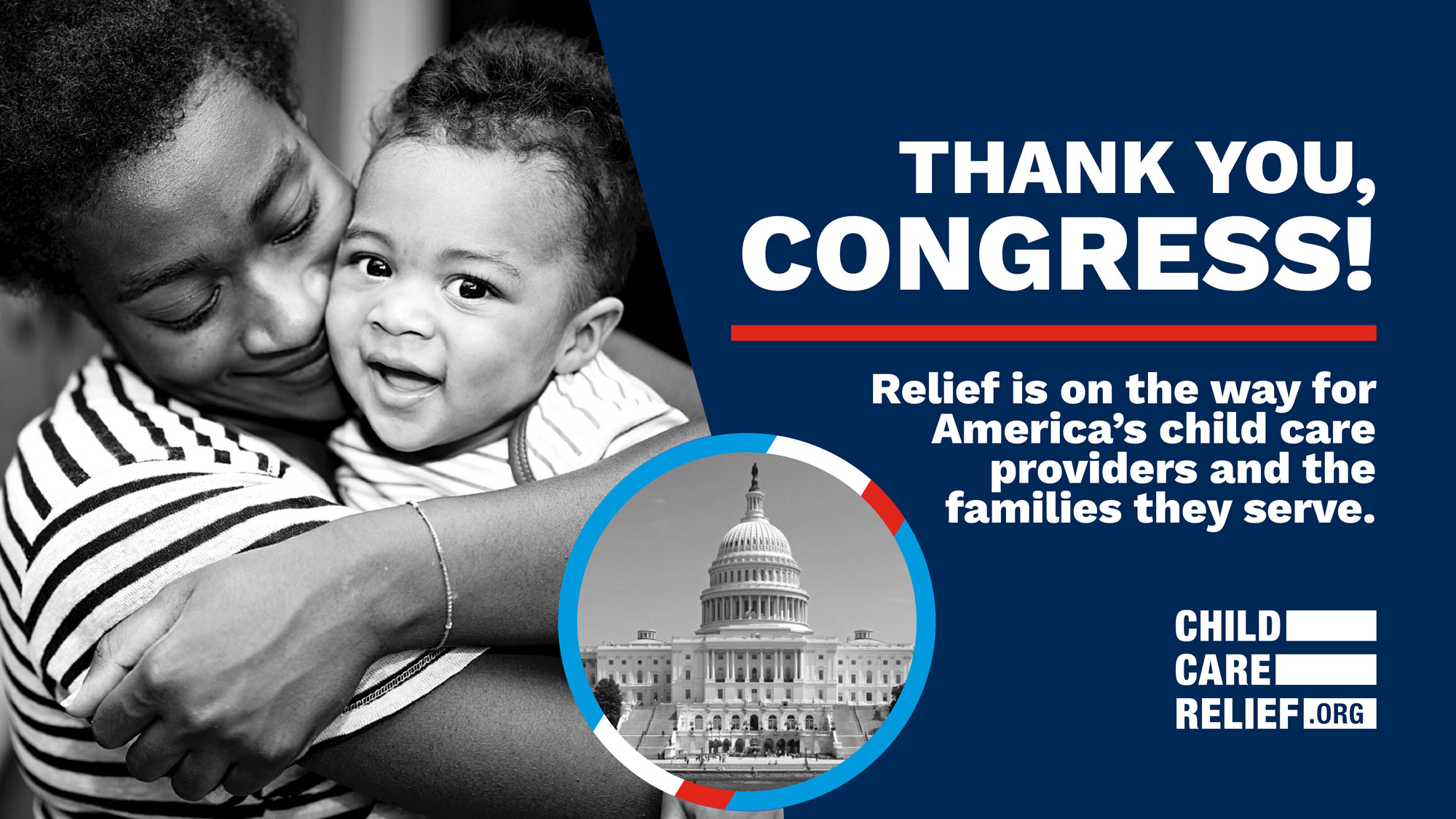
NAEYC Survey: The Ongoing Effect of the Pandemic on Child Care
The following is from the National Association for the Education of Young Children (NAEYC). The original resource is available on their website here.
An initial survey from the National Association for the Education of Young Children (NAEYC), conducted March 12–16, found that nearly half of child care programs anticipated that they would not survive a closure of more than two weeks without support. Now, one month later, following the passage of the CARES Act, significant state action, and a growing understanding of the scope and scale of the crisis, NAEYC is releasing new survey data that begins to explore the ongoing impact of the pandemic and the solutions that have been put forth so far.
From April 2–10, more than 5,000 providers responded to the survey, from all 50 states, the District of Columbia, and Puerto Rico. 54% of respondents work in center-based child care, and another 31% work in family child care homes; together, these survey respondents alone serve upwards of 215,000 children.
- Nearly half of respondents report that their center is completely closed
- 17% are closed to everyone except children of essential personnel
- Of the remaining programs, only 3% are operating without modified rule
There are geographical differences: where 51% of programs in cities and suburbs report that they are completely closed, 40% of programs in small towns or rural areas say the same.
There are also meaningful differences across settings: 50% of child care centers report they are completely closed, compared to 27% of family child care homes.
These data points, along with information from states on the implications of state-mandated closures, translate into more than 100,000 provider closures across the country, plus many more that are operating with significantly reduced enrollment.
Of programs that remained open in some way, 85% of respondents reported that they were operating at less than 50% of their enrollment capacity, and the majority of those—65%—were operating at less than 25% of capacity. Further, most programs, whether open or closed, are unable to recoup their normal revenue from families who pay for child care without assistance. 52% of child care centers and 43% of family child care homes are not currently charging parents; another 22% of both groups are offering reduced tuition rates. Regardless of what actions programs are taking, however, the majority of respondents have found that fewer than 25% of families are continuing to pay tuition. This translates into sustained and substantial losses for providers and places educators and families into an untenable situation. This updated data reinforces that the financial solution in the midst of a pandemic cannot be based on supply and demand, nor be dependent on having more children come back to child care before it is safe to do so.
Financial Fears
Even before the pandemic, child care programs were operating on razor-thin margins, and early childhood educators were earning such low wages that nearly half of them were eligible for public assistance.
- Now, 37% of survey respondents reported that they either have had to lay off or furlough workers, or that they themselves have been laid off or furloughed.
- As a percentage of the total early childhood education workforce of approximately 2 million paid individuals working with children birth through age 5, this represents 740,000 early childhood educators.
- Further, they indicated things are likely to get worse: an additional 41% said they anticipate furloughs and/or lay offs in the next 1-4 weeks.
Financial fears loom large for individuals in all roles: 59% of individuals working in child care centers and 43% of those working in family child care homes cited paying staff or themselves as sole providers as the thing they are most worried about (another third of those in family child care homes cited the ability to make mortgage payments as their top concern). At the same time, their options to address these worries are limited. When asked how they or their staff are being financially supported, nearly a quarter said they are encouraging staff to file for unemployment benefits, while one in five of those surveyed reported no financial support at all (i.e., paid leave, salaries, health benefits, etc.)
Paycheck Protection Program
The Paycheck Protection Program (PPP) is one of the programs offered by the federal government, through lenders, which will provide some of the financial support that is needed; of survey respondents, 53% of child care centers and 25% of family child care homes have applied for the PPP loan.
As the field awaits additional data about the extent to which these applications have been successful, child care programs have raised significant concerns about the program and process. The survey captured more than 4,000 comments, which reflect significant variation of 4,000 comments, which reflect significant variation of experiences. Many child care directors and owners of family child care programs are deeply concerned about the risks related to loans, wary about taking on debt, and skeptical about the potential for forgiveness.
The survey illustrates that 69% of respondents either do not want loans or are worried about having to pay loans back.
Additional qualitative data drawn from the survey and other mechanisms includes reports of challenges such as banks that are not accepting new clients or have closed their processes already. Of those who responded to a question about challenges they have encountered in the context of these loans, 23% identified logistical challenges related to paperwork and banks.
NAEYC looks forward to sharing additional results from the survey in English and Spanish as more providers respond in the coming weeks.
